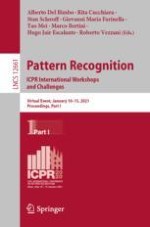2021 | Buch
Pattern Recognition. ICPR International Workshops and Challenges
Virtual Event, January 10–15, 2021, Proceedings, Part I
herausgegeben von: Prof. Alberto Del Bimbo, Prof. Rita Cucchiara, Prof. Stan Sclaroff, Dr. Giovanni Maria Farinella, Tao Mei, Prof. Dr. Marco Bertini, Hugo Jair Escalante, Dr. Roberto Vezzani
Verlag: Springer International Publishing
Buchreihe : Lecture Notes in Computer Science
